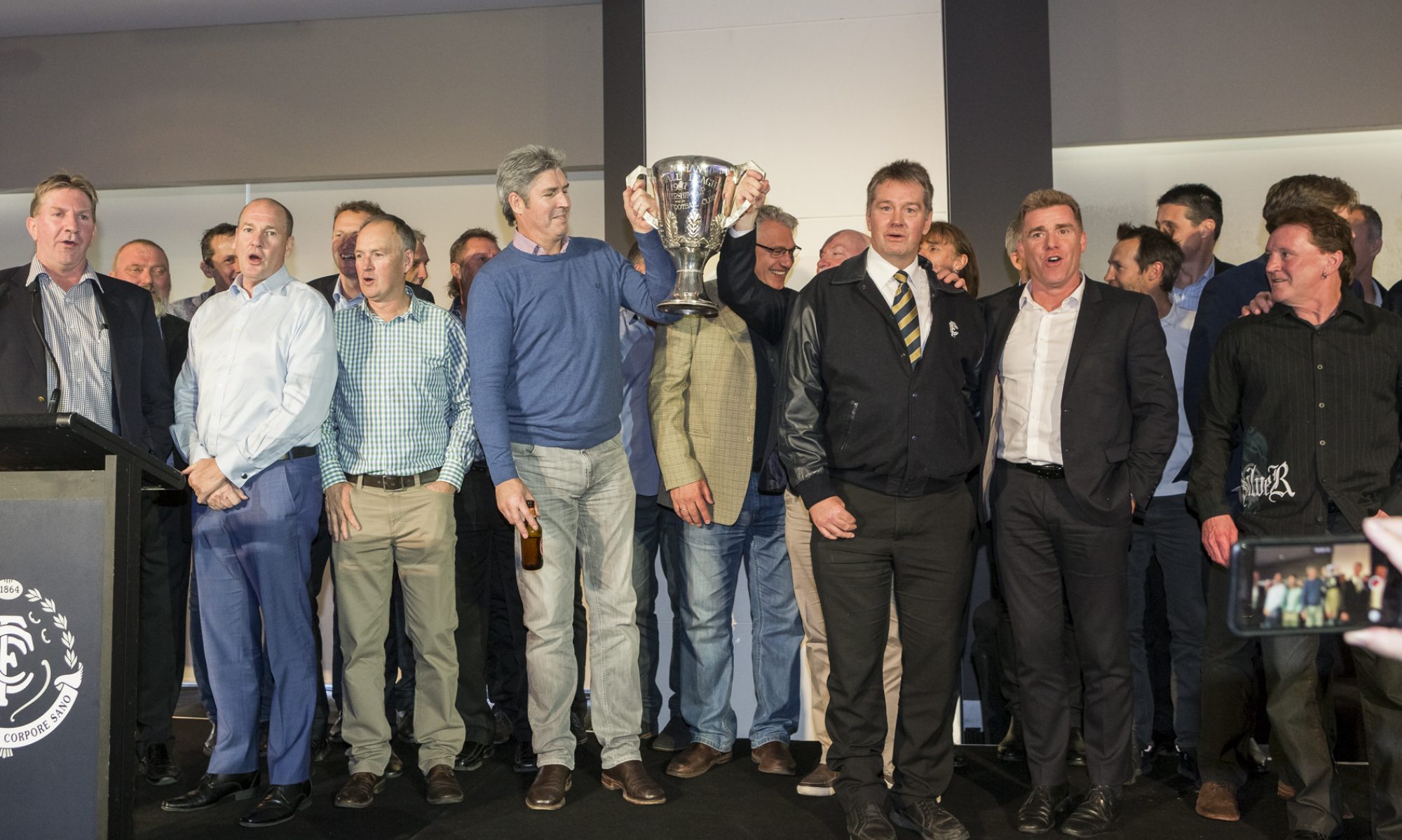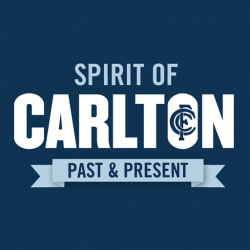View this post on Instagram
30 years on, Troy Bond returns for old time’s sake
Troy Bond revisits IKON Park.
By Tony De Bolfo,
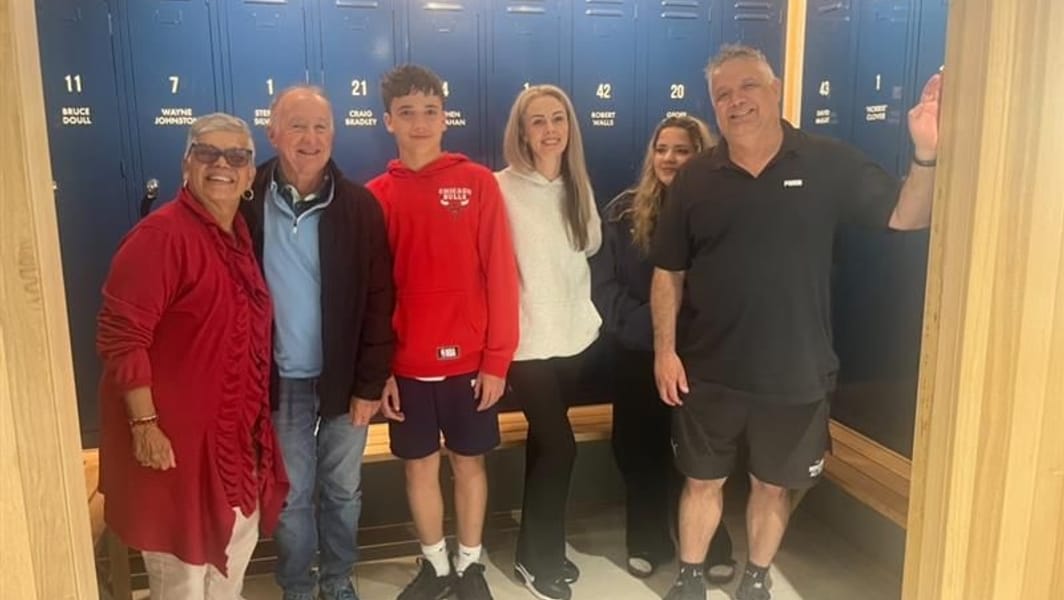
The names of 42 players can be found on Carlton’s senior list of 1995 – amongst them the much-heralded 21 who featured in the all-conquering Grand Final of that year, together with Troy Bond, “the 22nd man” as it were.
This week, Bond returned to the old Carlton ground for the first time in 30 years. Accompanying him were his parents Bob and Deborah, wife Leah and children Tre and Kristen, all of whom had jetted in from Adelaide for what is a week-long family holiday.
Together they were taken on a tour of the facilities by an old friend Shane O’Sullivan, and were duly impressed with what they saw.
“It was incredible to see the redevelopment. It’s top class,” Bond said.
“It’s difficult to explain, but in walking through the doors you ‘feel’ that you’re part of Carlton. It’s something you actually feel – and it was so important for me and my family to have a look around.
“It meant a hell of a lot to come back, because Carlton gave me the chance to play senior League football.”
Troy Bond’s Carlton connection was first forged with his naming at overall selection 88 in the 1992 national draft, but he didn’t cross the border until 1994 given his keenness to be part of a Port Adelaide Premiership. Regrettably Port was bundled out of the ’93 finals in straight sets, and so he made the move.
Bond completed his Carlton senior debut in the opening round of 1994, as fate would have it, against Adelaide at Football Park. Remembered for his serious turn of speed and glorious foot skills, he booted three goals on debut on Mark Ricciuto no less, though the performance was somewhat overshadowed by Tony Modra’s 13.3 up front for the Crows.
On recently parting the doors to IKON Park’s main entrance, Bond’s eyes were immediately drawn to the 1995 Premiership cup – the first of 16 trophies encased in glass-topped plinths one in front of the other. Bond could see the irony, for he was the unlucky one forced to give way for the first-year fellow South Australian recruit Scott Camporeale – ‘Campo’ having been recalled for that last Saturday in September ’95 after missing the Preliminary Final with North Melbourne with a twinged ‘hammy’ in the Brisbane qualifier 13 days earlier.
As is understandable, Bond didn’t take his Grand Final omission well. He and his older brother Shane – who flew into Melbourne in the belief Troy was playing – caught a flight home to Adelaide on Grand Final eve. On Grand Final day, Bond didn’t bother warming the set for the live telecast either – and not long after he requested a clearance despite Coach David Parkin’s best efforts.
Bond parted company with the club after just 36 senior appearances through two seasons at Princes Park – in a three-way trade which saw him wind up at Adelaide, the Crows’ Martin McKinnon head to GeeIong, and Adrian Hickmott vacate the Cattery for Carlton.
For Bond it was a sliding doors moment. He would ultimately be part of the Crows’ inaugural 1997 Premiership outfit, and would have almost certainly been there for the ’98 Grand Final triumph, had it not been for a dislocated shoulder incurred in an accidental collision with Carlton’s Craig Bradley in the Round 16 match under lights at Football Park.
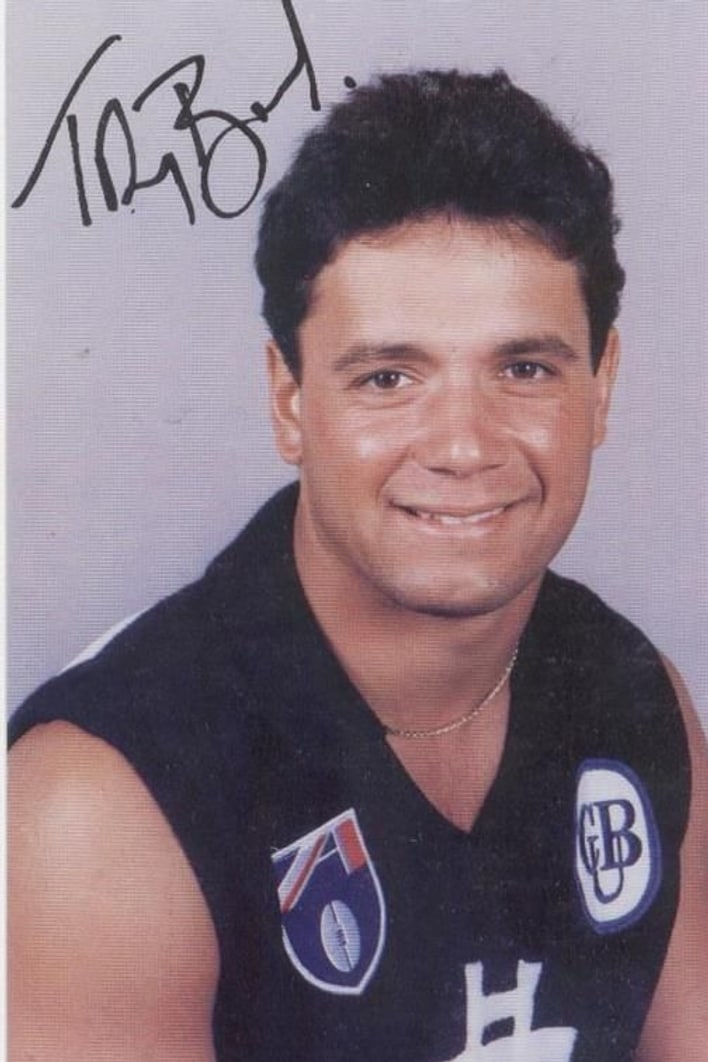
Earlier this year, Bond politely declined an invitation to the 30-year reunion of the Stephen Kernahan-captained Carlton Premiership team of ’95 – “not because I’m still resentful, because I’m not”.
As he said: “It was more the case that because I didn’t play in it I didn’t feel part of it”.
But Bond importantly bears no animosity for missing the cut in ’95 and thereby the Carlton Premiership.
“People think I might be bitter with what happened and that I’d want nothing to do with the club, which is absolutely false,” Bond said.
“Yes, for the first couple of years I was very disappointed, but life’s too short – and for those two years I have nothing but great memories because I played with some of the greatest players ever to play League football, and some of the greatest blokes. That includes Scotty (Camporeale) and it’s great to see his kids at the club now.”
Bond also has no issues with his then Senior Coach David Parkin who with Col Kinnear met him after the event in Adelaide in a vain bid to persuade him to play on in season ’96.
“Someone told me that David Parkin had later mentioned somewhere on television or radio that not playing me was one of the hardest decision he ever had to make in football – which means a lot to me for him to say that,” Bond said.
“I know David’s still pretty mortified to this day, but I’d be only too happy to talk to him again because he has my respect. He was my first coach at AFL level, he is a legend of the football club and the game, and I’d take his call no problem.”
Bond’s very special walk down Royal Park and into memory lane has proved to be a genuine highlight for him and his family. At week’s end they’ll all head home, and Bond will resume duties with Anglicare SA as its Aboriginal Cultural Practitioner in support of Indigenous children in foster care. Bond is enjoying giving back to the community. As he said: “It’s just great to see the kids grow up with their cultural needs met”.
When he returns to the City of Churches at week’s end, Carlton’s old No.8 will remember with great fondness the day he reacquainted himself with his old home on Royal Parade.
As he said: “For a 20 year-old kid to come to Melbourne and play for one of the biggest clubs in the AFL was a dream for me, and I absolutely loved it”.
Vale Brian Kekovich – Blues’ drought-breaking Premiership hero
The Carlton Football Club is mourning the loss of its hero of the drought-breaking 1968 Grand Final victory, the 34-game full-forward Brian Kekovich.
By Tony De Bolfo,
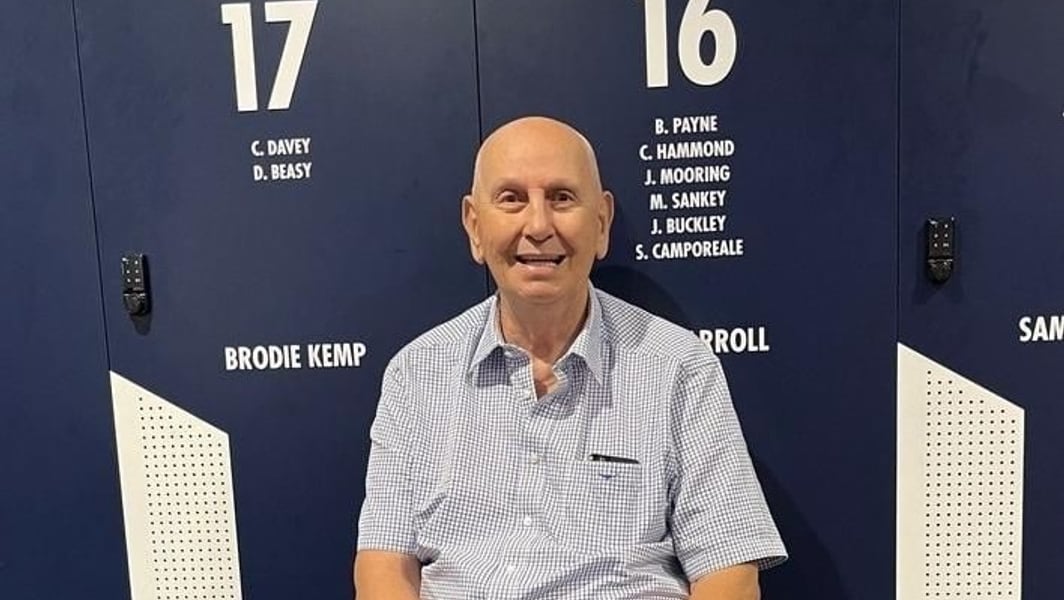
The Carlton Football Club is mourning the loss of its hero of the drought-breaking 1968 Grand Final victory, the 34-game full-forward Brian Kekovich.
Kekovich passed away in Perth at the age of 79 after a long illness. Carlton’s AFLW players, who coincidentally meet the Eagles in Perth on Friday night, will wear black armbands as a mark of respect.
History records Kekovich as having booted four goals from full-forward – all before half-time on his natural left foot and three of them with the barrel – in what would be his 34th and final appearance on Grand Final day against Essendon.
In doing so, he brought glorious finality to his club’s 21-year premiership drought, kicking half of Carlton’s score in the first League Grand Final in history where a team has triumphed with less goals kicked.
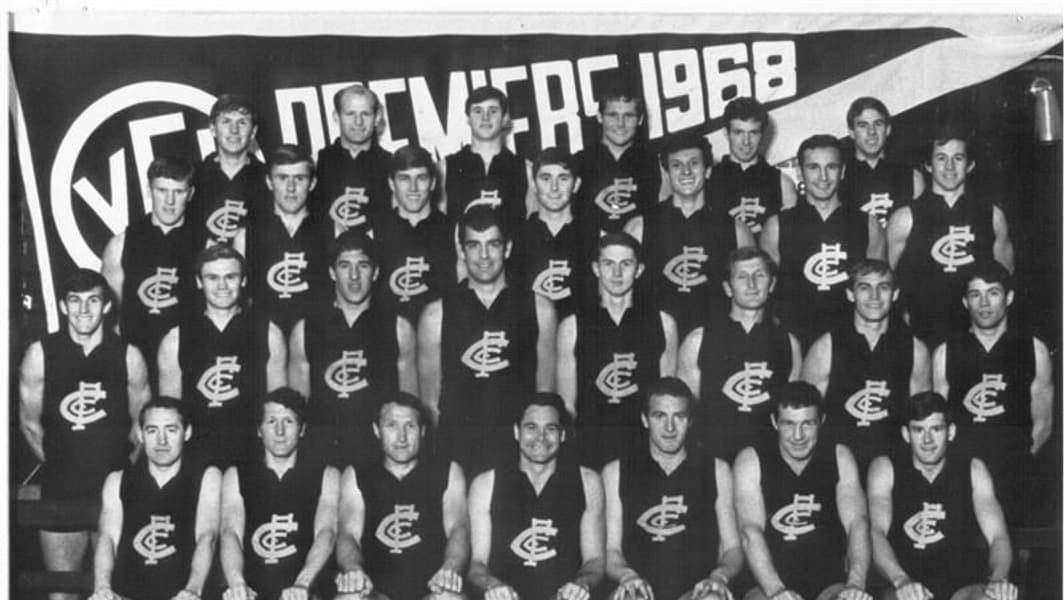
For anyone of the dark Navy Blue persuasion it is, as ‘Bogey’ once said, “the stuff that dreams are made of”. But this was no dream for Kekovich. It was precisely how Grand Final day 1968 panned out for the then 22-year-old Myrtleford recruit, who contributed 4.4 (28) to Carlton’s ultimate tally of 7.14 (56) – three points to the better of the Bombers’ 8.5 (53).
Two years ago, Kekovich returned to the old Carlton ground for the first time in more than 50 years. He stood by the ’68 premiership trophy in the foyer, sat in front of the No.16 door in the locker room and cast his eye over the verdant playing surface where he, Alex Jesaulenko and Brent Crosswell wreaked havoc up front.
Kekovich’s whirlwind visit from Western Australia (his home for the past 19 years) coincided with a Carlton Life Members Luncheon at Kew Golf Club where he was reunited with his ’68 Grand Final contemporaries John Nicholls, Ian Collins, Peter Jones, Bryan Quirk and Barry Gill – and linked up with premiership players of later years like Ken Hunter and Anthony Koutoufides – at a Life Members Luncheon at Kew Golf Club.
“I’m delighted and humbled to be back,” said Kekovich at the time. “At the luncheon I saw people I had not seen for more than 50 years, and met and spoken with players I’ve respected but never met. That was unbelievable for me.
“Walking in I felt like I was playing a game. I was half excited, half nervous, but once I saw John Nicholls I forgot about everything. John Nicholls asked why I left him and I said ‘Í didn’t leave you deliberately, that’s what happens sometimes’.”
Born Branko Kekovich in January 1946, Brian was just two when he followed his Yugoslavian father Vladimir and mother Milica to Australia; the family having spent the immediate post-World War Two years in a refugee camp in the Sinai desert near the Suez Canal. It’s a story not dissimilar to that of Alex Jesaulenko, with whom Kekovich made his Carlton senior debut in the opening round of 1967, earning Kevin Murray as his first opponent.
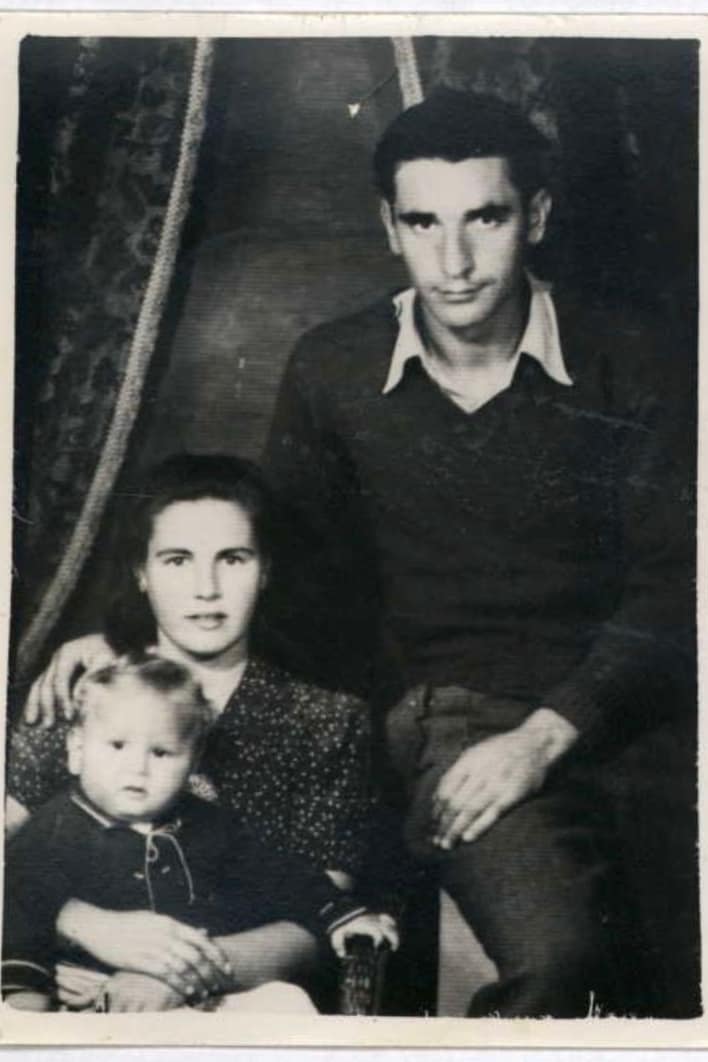
The Kekovichs initially settled in Western Australia, in the town of Manjimup some 307 kilometres south of Perth, where they found work on a tobacco-growing property. It was there that Brian’s younger brother Sam was born, and a third brother Michael would follow.
Sam would later feature in North Melbourne’s inaugural 1975 premiership team. Michael, whom Brian considered the most gifted of the three footballing brothers, was just 17 when he was tragically hit and killed by a car whilst on a training run in Doncaster in June 1971. All three inherited the sporting genes of their father, a soccer player of renown who first represented the Army in the Middle East and later Western Australia at state level.
In 1955 the Kekovichs crossed the Nullarbor to Victoria, to Gunbower in the state’s north. Kekovich first kicked a footy at Gunbower State School in 1956 – the same year he joined his Dad on the trip from Gunbower to the MCG for the first time to watch the Games of the ’56 Olympiad. Though a soccer final involving Russia and Yugoslavia piqued his father’s interest on that occasion, Brian homed in on the high jump when Chilla Porter took the silver medal for Australia.
“The high jump finished at quarter past seven at night and in the dark, and my father kept saying ‘Let’s go, let’s go’,” Kekovich recalled. “That’s when I said to my father ‘I’ll be back here one day’, not thinking that I’d be playing footy with Carlton in ’68 and winning a Grand Final.”
In 1960 the Kekovichs were again on the move, this time to the tobacco fields of Myrtleford in Victoria’s northeast. In time, the oldest boy’s footballing talents in the Ovens and Murray caught the discerning eye of Graeme Richmond, and Kekovich put his signature to a form four guaranteeing that if he was to pursue a League career it would be with the Tigers.
“I played in two practice matches for Richmond, and when I finished high school and the crunch came my name was mentioned at Carlton by Gordon Newton (then a club director),” Kekovich said. “Carlton people came up and did what was necessary, although it didn’t end there. I rang Richmond and gave them a last opportunity, but their budget had run out and that was it.
“It wasn’t huge money, but I was happy with the way it turned out. Delighted actually. I’d played in Richmond practice games and knew Paddy Guinane, Billy Barrot, Mike Patterson, Roger Dean and Ronny Branton who was my coach at Myrtleford, so the connection (with Richmond) was always there. But Royce Hart came out of nowhere and Carlton needed key forwards, so I was happy to go to Carlton.”
At Princes Park, Kekovich quickly found his feet. In an intra-club practice match at Laverton in early 1967 he fared well on the ’64 Brownlow Medallist Gordon Collis, and backed it up in a practice match at Carlton the following week. Come the first round and he was named at centre half-forward alongside Jesaulenko – and he saw Jesaulenko’s genius from the outset.
“I can tell you know that in the first year if it wasn’t for Alex I wouldn’t have got a kick,” Kekovich said. “They all thought I was good at reading the game, but the only reason I was good at reading the game was because I could read what Alex was going to do and he gave me the kicks.
“Alex had an amazing leap off a standing start and amazing pace, and what surprised a lot of people was his strength because he wasn’t overly big. He was barely six foot, if six foot, but he was well-co-ordinated in any sport, not just football.
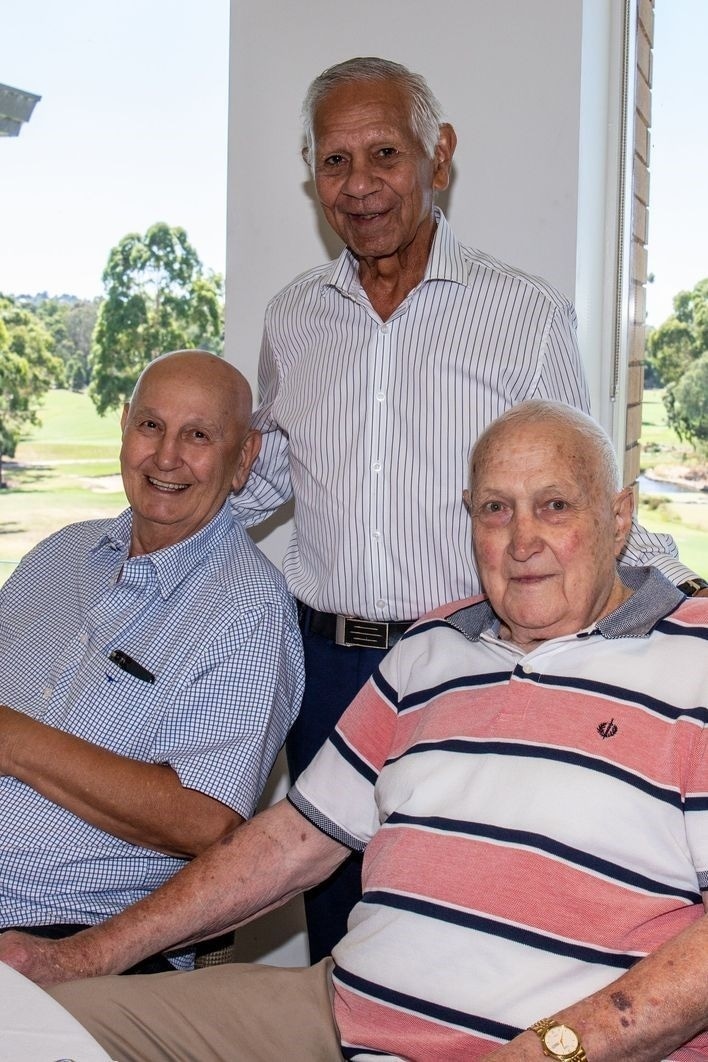
Kekovich took out the club’s goalkicking honours with 36 in his maiden season and 59 in his stellar 1968. The seismic improvement came in the wake of his omission for the 1967 preliminary final, when Kekovich completed every session through the summer under the watch of a sprint coach.
Kekovich’s marked improvement in stamina, strength and recovery was such that of the 17 of a possible 22 senior games in which he played in 1968, Carlton won all 17, the Grand Final included. Incredibly, he went into the 1968 Grand Final with a secret known only to himself – that for weeks he was labouring with a damaged vertebra at the base of his spine incurred when he fell onto an opponent’s boot in a reserve grade game earlier in the season.
“I lost strength in my legs which affected my strength in my marking, my speed, my recovery, everything,” he said. “I laboured with it because I didn’t want the coach to know I’d be playing finals with half an injury.”
It’s history now that Kekovich and his 19 Carlton teammates – under the watch of Ron Barassi whom Kekovich unhesitatingly declared “by far the greatest coach I ever had” – were part of a truly famous victory on a blustery Grand Final day 1968. In casting his mind back more than 50 years to that day, Kekovich is reminded of the excitement and the relief that he experienced in equal measure.
“I was also exhausted, and I remember saying to myself ‘If I’m exhausted, how is ‘Nick’ (Nicholls) feeling and how is ‘Serge’ (Sergio Silvagni) feeling?’ – all those blokes who’d been running harder and harder than I have, ‘I wonder how they’re feeling?’,” Kekovich said.
The lower back injury brought a cruel premature end to Kekovich’s football career (and a career in basketball at which he believed he was even more proficient) – with the 1970 and ’72 Carlton Grand Finals so tantalisingly close. On compassionate grounds he was cleared to North Melbourne to join his younger sibling Sam, and though he kicked eight in a practice match for the Kangaroos the physical duress proved too great for big brother to play on.
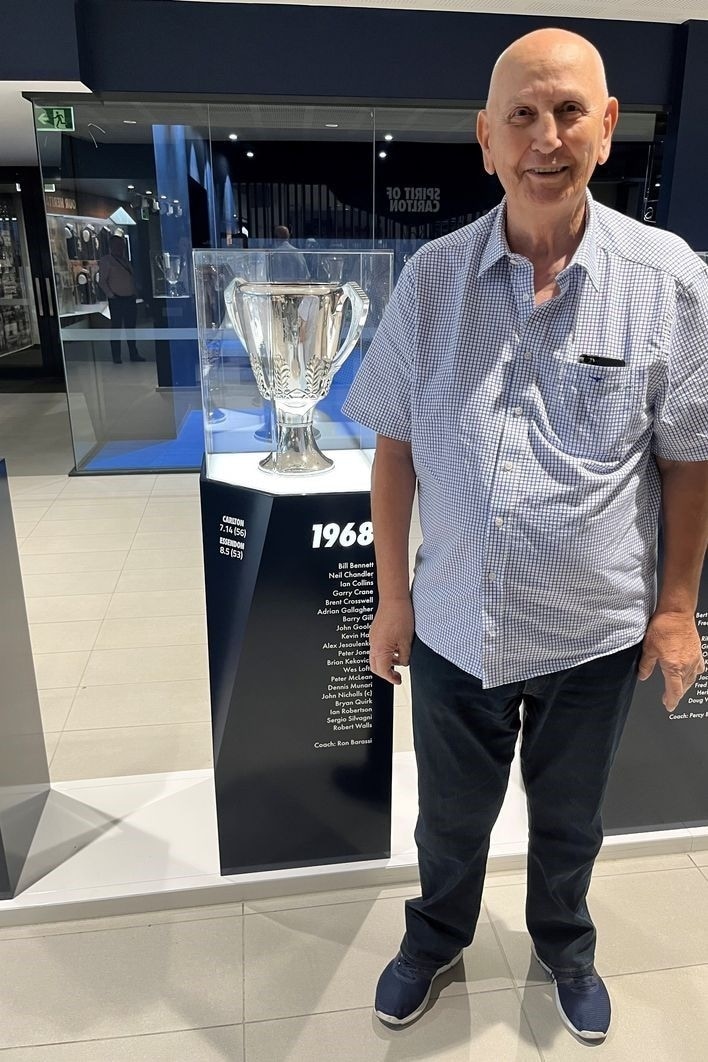
To the end, Kekovich followed the fortunes of today’s Carlton players with genuine fervour. As he said: “I can tell you from 4000 miles away how each and every one of them are”.
And he’ll always have ’68.
“I look back with tremendous pride at the fact that we won the Premiership,” Kekovich said.
“I don’t look back to the four goals, I honestly don’t. I could have kicked six goals in the first half and I missed a really easy one in the last quarter which would have put Essendon away.
“I only look back that we won the flag. It’s the winning, the camaraderie, the togetherness and the joy you brought to other people. That’s what made that day special.”
Carlton’s 1968 Premiership captain John Nicholls remembered Kekovich as “a good country kid whose part in a winning Grand Final was a dream come true”.
“Brian was one of a few players whose careers were cut short for various reasons in those days – and those were days when money was incidental. You weren’t playing for the money, but for the love,” Nicholls said.
“As a Carlton teammate, friend and passionate supporter, I loved him.”
Brian Kekovich was the 794th player to complete his senior debut for the Carlton Football Club since the formation of the VFL in 1897.
He is the eighth member of the feted 1968 Carlton Premiership 20 to pass away.
The Carlton team, featuring Brian Kekovich on debut – Round 1, Saturday, April 15, 1967 v Fitzroy @ Princes Park
Backs: Barry Gill Wes Lofts Ron Stone
Half-backs: John Lloyd John Goold Peter McLean
Centreline: Cliff Stewart Gordon Collis Ian Robertson
Half-forwards: Alex Jesaulenko Brian Kekovich Bryan Quirk
Forwards: Ron Barassi (cc) John Gill Terry Board
Followers: John Nicholls (vc) Sergio Silvagni Adrian Gallagher
Reserves: Kevin Hall Ian Collins
Blues back pocket Barry Schmidt passes
A tribute to former Carlton defender Barry Schmidt.
By Tony De Bolfo
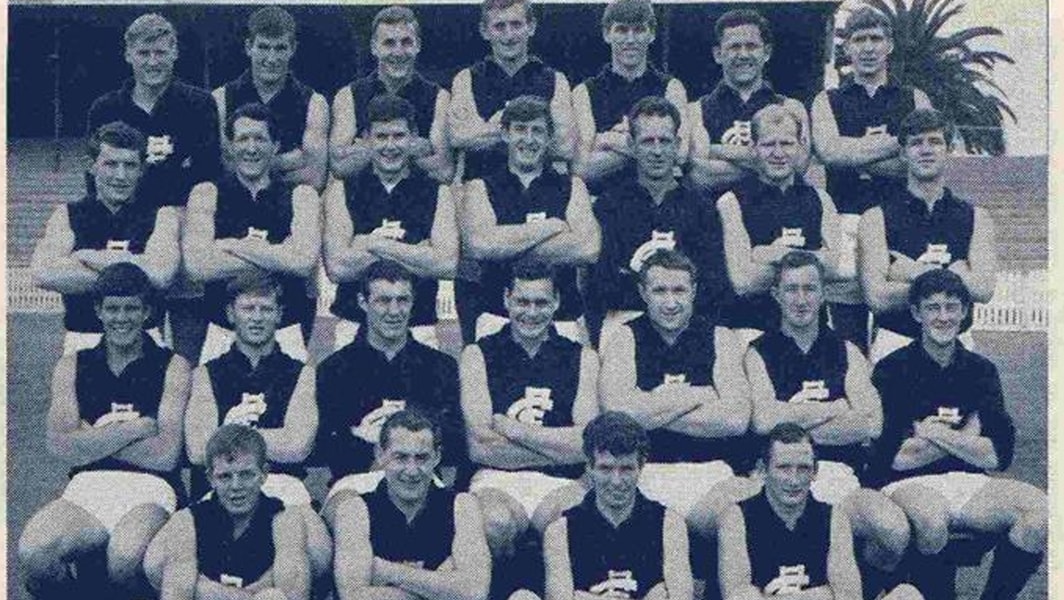
FORMER Carlton back pocket Barry Schmidt has passed away at the age of 81 – some 60 years after he took to the field for the first of just four senior matches under the watch of the newly-appointed Captain-Coach the late Ron Barassi.
Recruited to the club from Collingwood Technical School following an initial on-field stint with the north suburban outfit Carlton Youth Foundation, Schmidt first turned out for the Carlton Under 19 team in 1962 under Coach Tom Brooker and was duly adjudged Best Clubman. The following year, Schmidt was promoted to the reserves under Jack Carney’s watch, earning a Best and Fairest award for his sterling performances out of a back pocket.
In the wake of another full season with the seconds, Schmidt was called upon for his first senior match, against Geelong in Round 13, 1965. It happened on Saturday, July 24, the day after Norm Smith was sensationally sacked as Melbourne Coach. Named 19th man and sharing the pine with Terry Board, Schmidt, then 21, entered the fray late in the contest, won by the home team. Wearing the No.34 immediately prior to the three-time Premiership player Ian Robertson, Schmidt got to sing the song afterwards, but never again, as this would be the only team victory savoured in his four-game Carlton senior career.
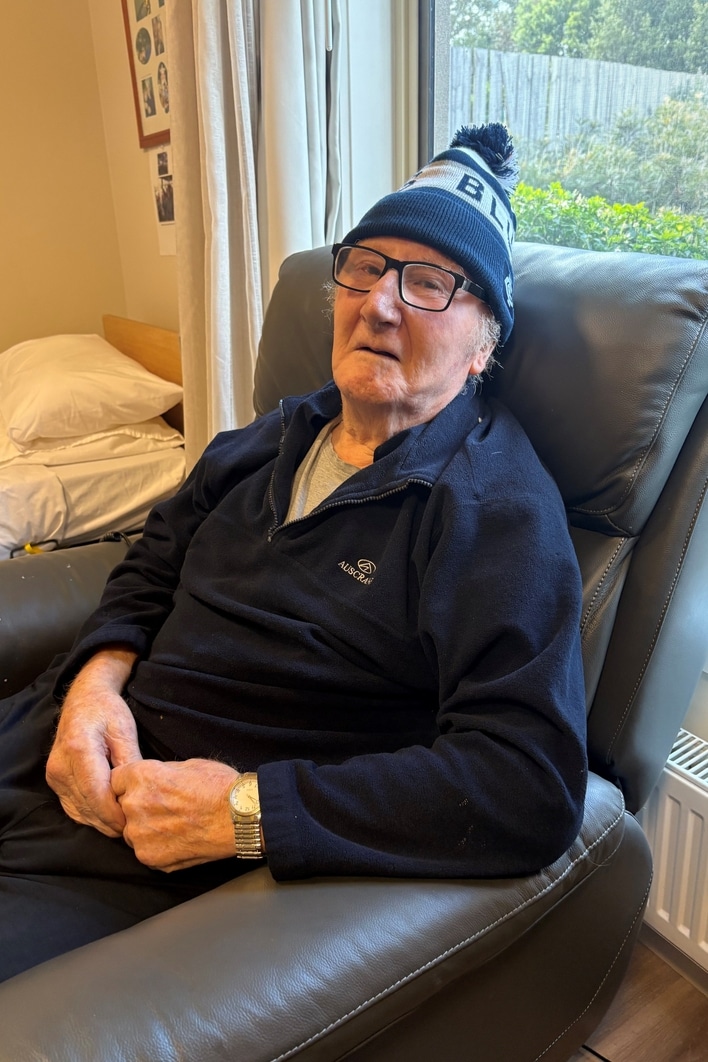
Schmidt was named on the bench twice more in losing contests with South Melbourne and Collingwood, before eventually starting on the ground when the Blues met Richmond on the MCG in Round 17 – Saturday, August 21, 1965. Named on the last line alongside Wes Lofts and Brian Buckley, Schmidt managed 11 possessions and a couple of marks under a fair degree of pressure, as the Blues fell 23 points adrift.
This would be Schmidt’s final senior appearance for Carlton, as it would also be for the ruckman Maurie Sankey in game number 100. Tragically, the 25 year-old Sankey would be killed in a car accident north of Wangaratta just three months later to the day.
Former Carlton rover Adrian Gallagher, a feted member of the 1968, ’70 and ’72 Premiership teams and a Best & Fairest winner in ’70, remembered Schmidt from as far back as the junior years. Of Schmidt, Gallagher recalled: “He was a left footer, played back pocket in the seniors and off a back flank in the lower grades”.
“Barry was pretty tough in his own right,” Gallagher said. “He wasn’t fiery, but he played it hard.”
Barry Schmidt was the 776th player to represent the Carlton Football Club at senior VFL/AFL level since 1897. He died after a long illness on September 30, his wife Maureen and son Craig having predeceased him.
Revealed! First historic image of Carlton’s Inaugural captain
Today, with the incredible discovery of the first precious photograph, a face can finally be put to the name of Henry (‘Harry’) Chadwick.
By Tony De Bolfo
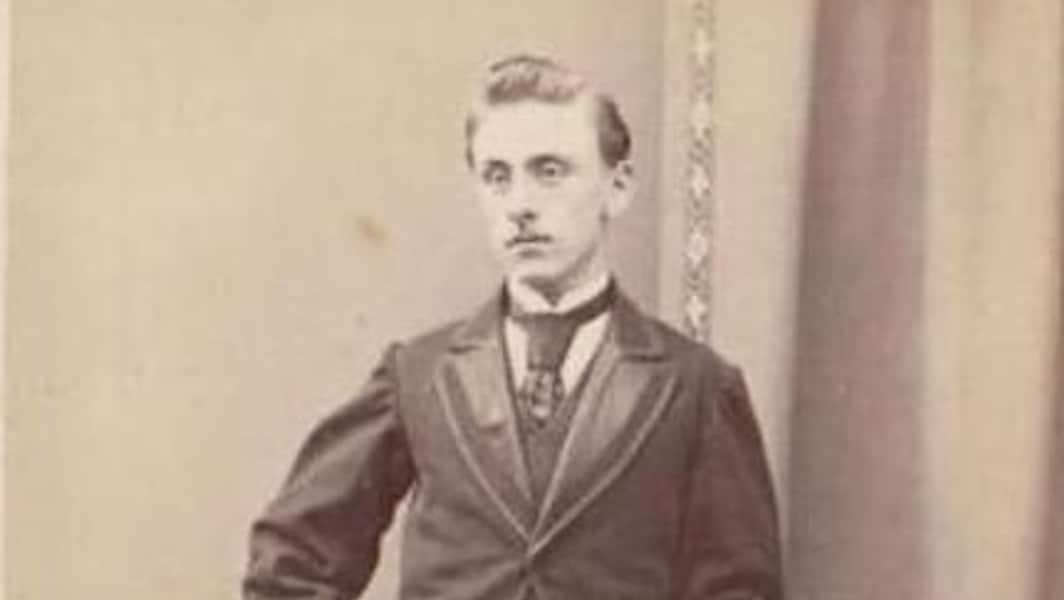
For more than 160 years, he was known by name only.
Today, with the incredible discovery of the first precious photograph, a face can finally be put to the name of Henry (‘Harry’) Chadwick – the first man elevated to the captaincy of the Carlton Football Club in its inception year of 1864.
The carte-de-visite of Chadwick, featured in formal attire with top hat and cane at the ready – was captured in the Swanston Street Australasian Studio of the photographer Charles Hewitt in October 1869. Credit for the discovery goes to Pete McLean, who for the past 18 years has voluntarily researched the club’s pre-VFL history for the much-patronised Blueseum website.

McLean recently sourced the Chadwick image from an Adelaide contact who prefers to remain nameless. The contact also provided McLean with a first photograph of David Adamson, Carlton’s Captain of 1867 – which means that each on-field leader for the past 161 years of club history is now represented by at least one portrait picture.
As McLean said: “I’ve been looking for photos of everyone who ever played for Carlton, but to be able to finally source images of Chadwick and Adamson – photos from so long ago – has been incredibly satisfying”.
Henry (‘Harry’) Chadwick, son of Henry sen., is thought to have been born in Manchester in 1845. He completed four years schooling at Scotch College from 1856 and a final year at Melbourne Grammar in 1860.
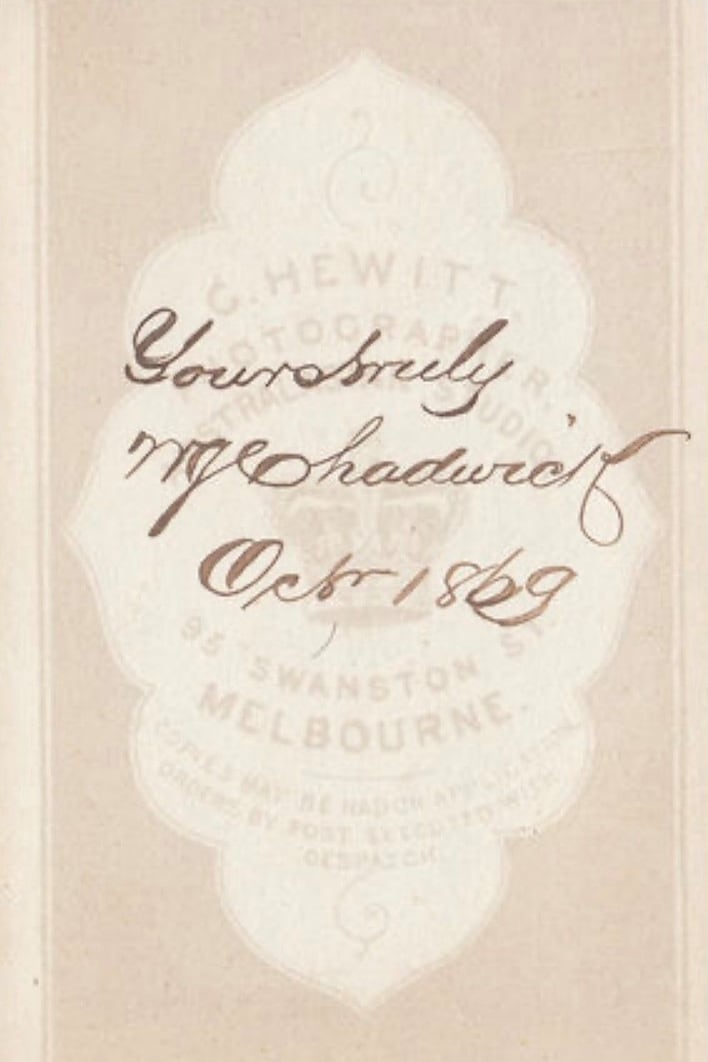
Chadwick was appointed Carlton captain in the club’s foundation year, and led the first teams onto the field through season 1865. The following year he shared captaincy duties with Theophilis S. Marshall, and in 1867 with Frank Hillsden, Jack Conway and Adamson – the same year he served the club as a committeeman.
In 1868, amid dissension in the ranks, Chadwick, James Byrne and Charles Forrester switched allegiances to the Melbourne Football Club.
The Chadwick photograph was captured four months after he married Hannah Skinner, at St Peter’s Anglican Church in Eastern Hill, and two months before the newlyweds relocated from Melbourne for Bacchus Marsh, where Henry would complete 12 years’ service as manager of the local branch of the National Bank of Australasia and help Hannah raise their seven children.
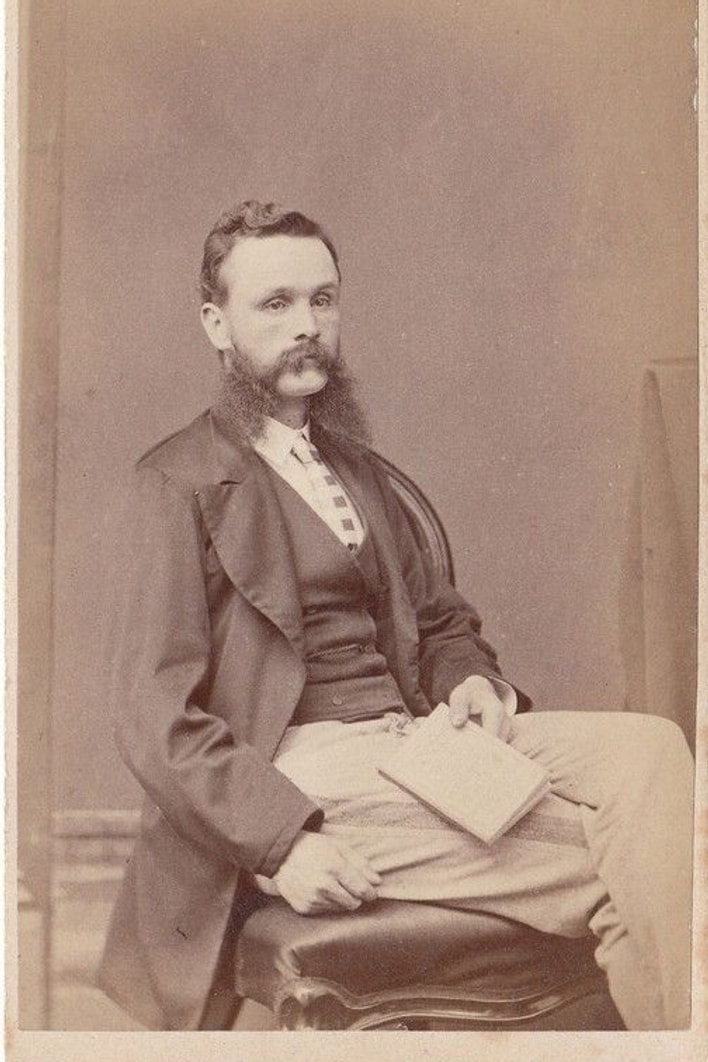
In early 1882, Chadwick accepted a transfer to manage the bank’s branch on the corner of Smith and Webb Streets, Fitzroy. In a ceremony at the Bacchus Marsh Courthouse prior to his departure, Chadwick was presented with an illuminated address, a silver tea and coffee service, and an engraved silver salver by the Shire Council President Thomas Cain, in recognition of his contributions to the local community. In making the presentation, Cain hoped Chadwick and his wife “would both be spared to a ripe old age to remember their friends in Bacchus Marsh”. But it was not to be for Henry.
The Chadwicks took up lodgings on the first floor of the bank’s imposing premises on Smith and Webb, but tragedy would befall Harry soon after. As the Bacchus Marsh Express reported on May 18, 1882:
“Bacchus Marsh people heard with regret on Monday of the death of Mr. Henry Chadwick, who recently left the managership of the local bank to take the same position in the National Bank at Collingwood. It appears that Mr. Chadwick over exerted himself on the 29th ult. in shifting a buggy, and broke a blood vessel. He took to his bed, and [was] thought to be recovering, but died on Monday morning last, leaving a wife and seven children.”
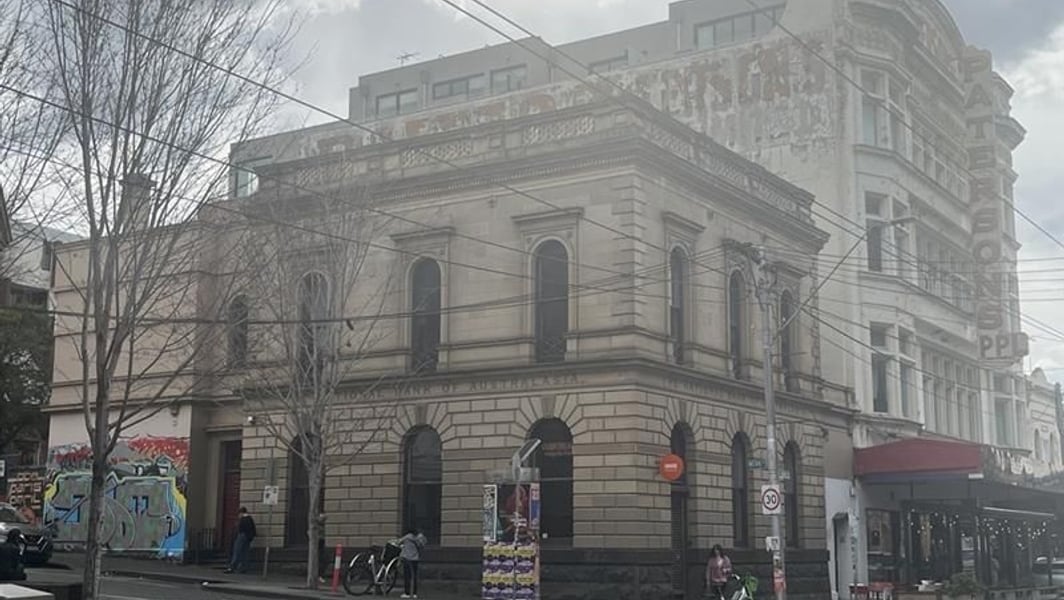
Harry Chadwick died of an apparent stroke at the age of just 37, leaving his wife and seven children to mourn his loss. He was laid to rest in Melbourne General Cemetery, not far from where he first led his fellow Carlton players out.
Twenty years later, Chadwick’s wife Hannah died in Ballan at the age of 52. She was laid to rest in her husband’s grave in Carlton.
In the pantheon of Carlton Football Club history, Harry Chadwick has long been acknowledged as the first of 20 captains of the pre-VFL years (1864-1896) – preceding the next 52 captains of the VFL/AFL years (1897-2025) from Jimmy Aitken through to Patrick Cripps.
At long last, Carlton can also put a face to Harry’s name.
Blues’ long-standing bootstudder passes
Laurie Carter, a bootstudder at Carlton has passed away just eight days short of his 93rd birthday.
By Tony De Bolfo
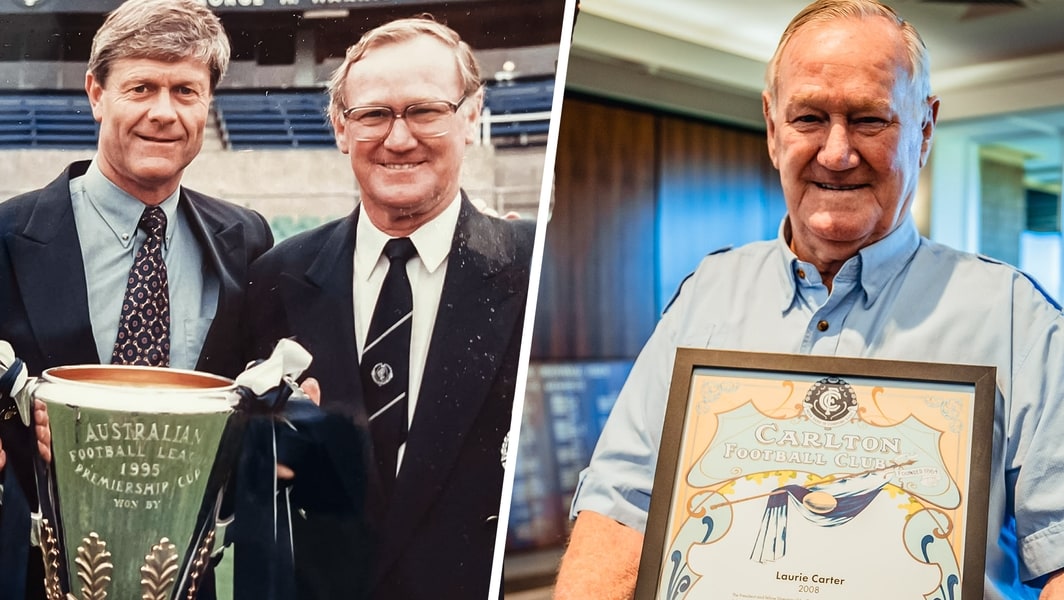
LAURIE Carter, a bootstudder at Carlton for more than 25 years and a Life Member of the Club he supported since his childhood, has passed away just eight days short of his 93rd birthday.
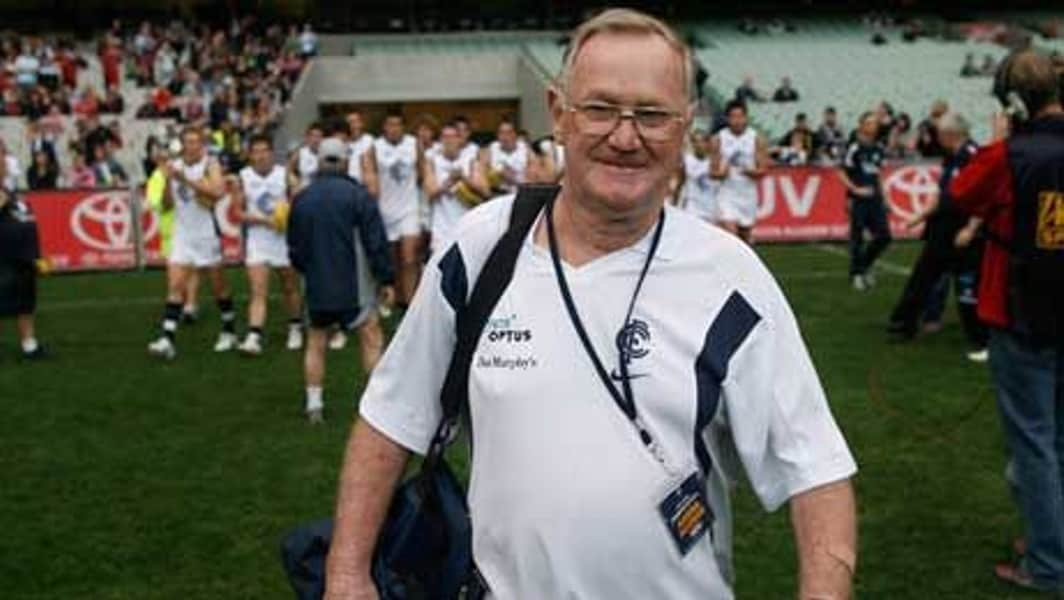
Carter’s association with the Club as a senior staff member can be sourced to the Premiership year of 1982, and formally ended in the final home and away round of 2007 – co-incidentally the last Carlton appearances of both Lance Whitnall and Josh Kennedy – against Melbourne at the MCG.
He had previously served as a bootstudder for the reserve grade team through the late 1970s, but followed the mighty Blues from his early years, as his daughter Jenny Hoar explained.
“Laurie’s father was a jockey and later an SP bookie, but May his Mum didn’t have much time for the races and was a mad Carlton supporter,” Jenny said.
“I used to go to the footy with Dad and May and stand on steel cans in the outer. May always took a thermos and found her place on the fence at the old Heatley Stand end near the players’ race. That was from 9am, she was there for the whole day – and they were great days.
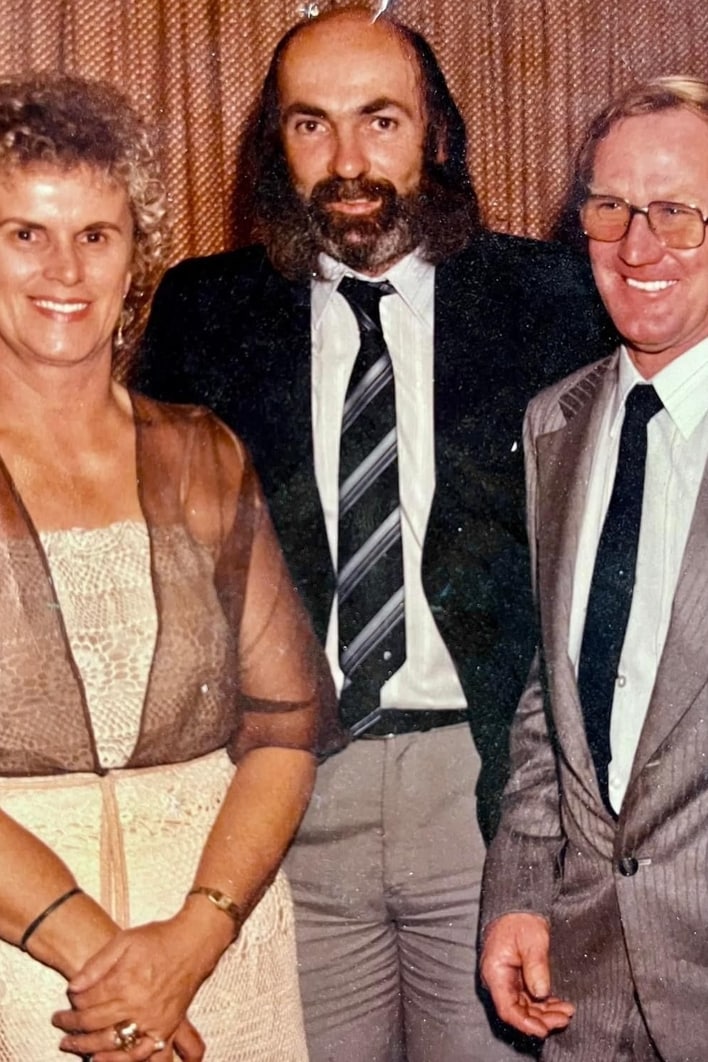
“Laurie was a builder by trade, and he did a lot of renovations for the homes of Carlton players boots. Dad got on well with the coaches and the players, particularly Brett Ratten who shared his love for the races.
“Carlton meant everything to him. His life revolved around Carlton and he never cared about not getting paid, because working at Carlton was a labour of love for him.”
In December 2008, Laurie was awarded Life Membership at the Club’s Annual General Meeting. He was bestowed with the honour alongside former Carlton footballer Simon Wiggins, with the then President Stephen Kernahan making the presentations.

Laurie was last seen at a Club function in March this year, when fellow Life Members gathered for the annual Luncheon at Kew Golf Club. He passed away last Saturday night at his son Jeff’s house in Bellingen on the New South Wales Mid North Coast.
“Dad had asthma since he was three and his lungs went in the end. He was fine up until the last five years and then suffered regular bouts of pneumonia. In the end he chose to go off his medication and he still had his marbles.”
Laurie’s wife Anita pre-deceased him in 2002, and their son Peter in 2018. Laurie is survived by his 94 year-old sister Dorothy, son Jeff, daughter Jenny, seven grandchildren, 14 great-grandchildren and three great-great-grandchildren.
A private service for Laurie Carter will be held at the family’s request, and the Carlton players will wear black armbands as a mark of respect in Saturday night’s match with Gold Coast at Marvel Stadium.

’38 Medal brings focus to the short life of a brave former Blue
The Lafranchi medal has surfaced from the 1938 Premiership.
By Tony De Bolfo

THE EMERGENCE of a medal awarded by the VFL to Leo Lafranchi in the Carlton Premiership year of 1938 has helped perpetuate the memory of a little-known reserve grade ruckman whose life was tragically cut short in wartime.
The Lafranchi medal has been in the keep of Arron Taylor, a resident of Southern Queensland. Taylor said that he inherited the item following the passing of his grandmother more than 20 years ago.
“The medal was in a box of things my grandmother left me,” Taylor said. “I have no idea how she came to get the medal and I talked to relatives long lost who could shed no light. One possibility is that my grandmother knew the Lafranchi family in the days when she lived in Stanhope.
“I’ve had it a long time, I don’t display it and I’ve taken care of it.”
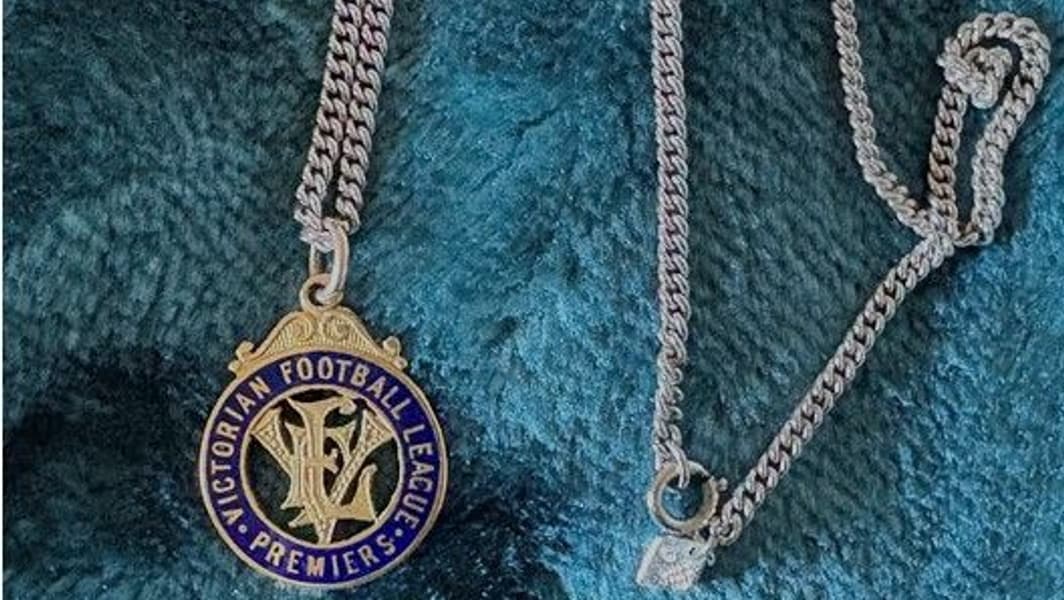
The medal’s recipient, Leo Lafranchi, was born in the Victorian gold-rush era town of Chiltern in 1914. Lafranchi was known to have plied his footballing craft with Fawkner, Brocklesby in the Riverina and finally neighbouring VFA outfit Coburg, before being granted a clearance to Carlton in April 1938.
The club’s 1938 Annual Report lists a total of 31 players, amongst them Captain-Coach Brighton Diggins, as having represented the Blues at senior level in that landmark
season, with a further 15 players, Lafranchi included, also listed despite not having earned senior selection.
Wearing the No.16 on his back, Lafranchi only managed a handful of reserve grade games for Carlton through 1938 and ’39 – yet his name is engraved into the reverse side of the ’38 Premiership medal, which suggests all members of the Carlton playing squad were so honoured for contributing to Carlton’s first flag in 23 years.
In May 1939, Lafranchi was granted a clearance and returned to Coburg City Oval. His career with the Lions would span the 1939 and ’40 seasons, and net him 45 senior games… until war intervened.
Fast forward to July 1940, and Lafranchi, then 26, single and a motor assembler by profession, enlisted with the Australian Army in Royal Park (when the photograph appearing with this story was first captured).
A year later, Pte Lanfranchi of the 2/29 Australian Infantry Battalion boarded a Singapore-bound troopship, and disembarked in mid-August.
He would be dead within six months.
In January 1942, following the Battle of Muar, Pte Lanfranchi was amongst the wounded Australian and Indian soldiers left behind by withdrawing troops. The men, now Prisoners of War, were rounded up by the Japanese and forced to surrender all of their belongings including their clothes. They were then beaten, tormented and denied food, water and medical attention.
At sunset on the night of January 22, 1942, Lafranchi and his fellow soldiers – 145 in all – were roped or wired together in groups and led into the jungle at Parit Sulong. There they were shot with machine guns, doused with petrol and set alight. Only Lieutenant Ben Hackney and Pte Reginald Wharton survived, having feigned death throughout the barbarity.
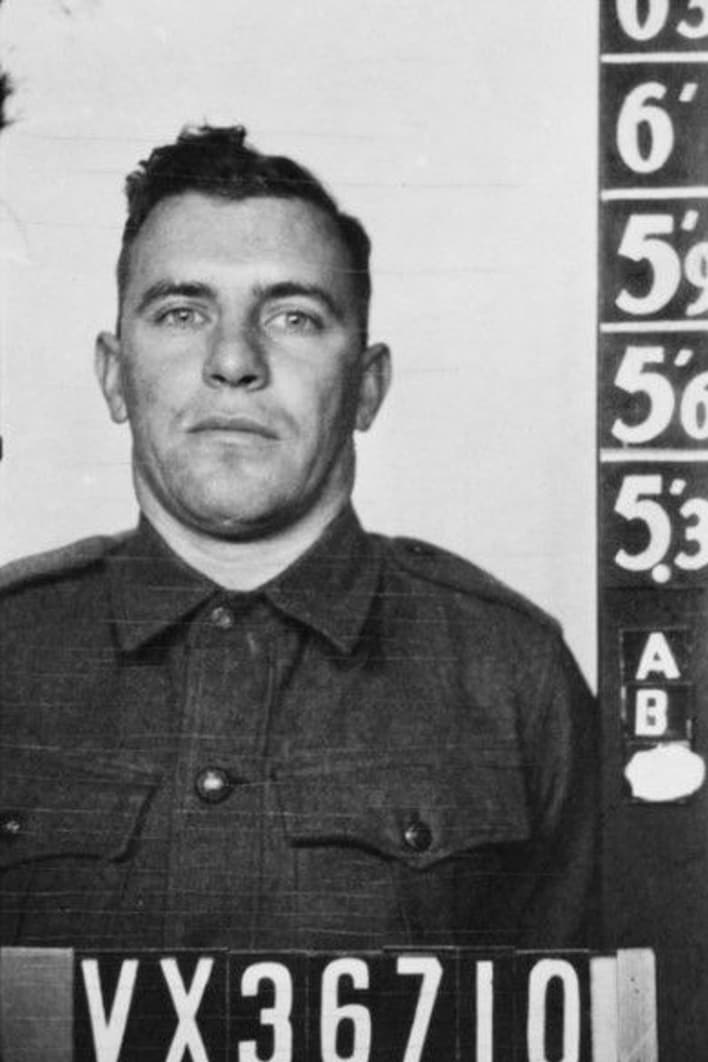
Pte Leo Lafranchi – the boy from Chiltern who tried his luck with Carlton at Princes Park – was just 27 years old when he died. His name, and the names of all his fellow Prisoners of War who lost their lives, are set in stone at a memorial at the Kranji War Cemetery, 22 kilometres north of Singapore – and the ’38 Premiership medallion bearing his mark also serves as a salient reminder of the budding Blues ruckman.
Taylor said that circumstance had now forced him to avail the Lafranchi medal for sale.
“I’m at the stage where id like to sell the medal. I don’t have any relatives to give it to and it doesn’t mean a lot to me now,” Taylor said.
“I’m hoping that the medal will find a home for someone who would really appreciate this historic item – maybe a Carlton person who believes its best home is the club.”
Arron Taylor welcomes anyone who may be interested in purchasing the Lafranchi medal to contact him on 0491 263680. Serious bids only.
Adrian Whitehead 1995 – Latest Video
Former Carlton GM passes
Jim Allison has died at the age of 84 after a long illness.
By Tony De Bolfo
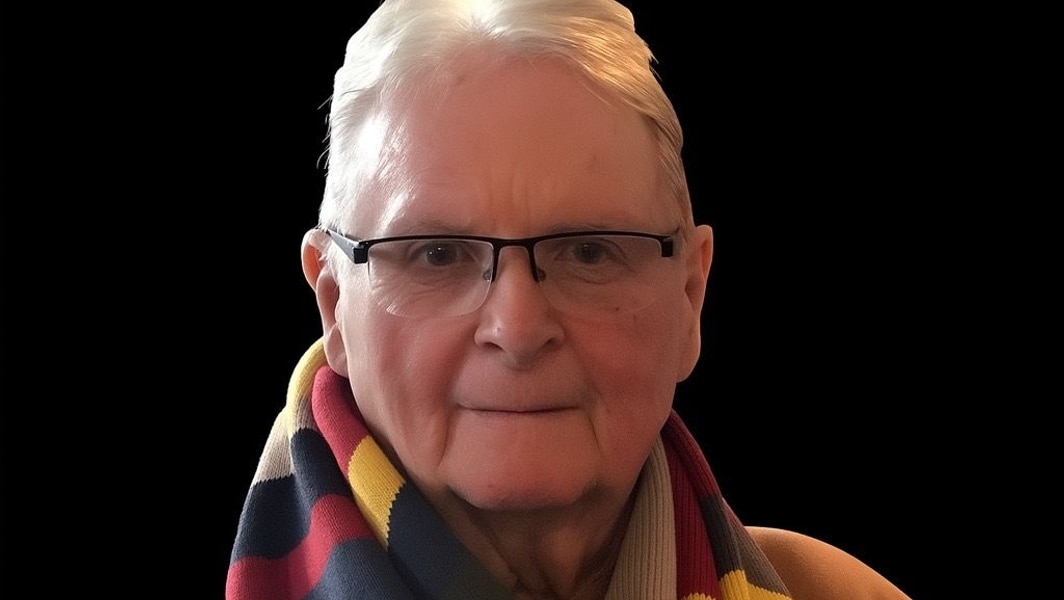
Jim Allison, who accepted the role of Carlton’s Chief Executive at a time when political unrest threatened to tear the club apart, has died at the age of 84 after a long illness.
Allison’s early involvement with the game at League level took in 16 years at North Melbourne as team manager for the Under 17s, Under 19s and Seniors. He later served as General Manager of the then Footscray Football Club, and replaced the late Keith McKenzie as Carlton GM when the latter retired from the position just prior to the commencement of the 1980 season.
The previous December, in what was a Premiership year of 1979, Ian Rice was appointed Carlton President and Peter Jones Senior Coach after George Harris and Alex Jesaulenko relinquished their positions as President and Senior Coach respectively.
Allison, supported by the Business Development Manager Kevin Cooksley, “greatly assisted the Committee in this turnabout of the Club’s financial position,” as Rice declared in the 1980 Annual Report.
But Allison’s and Cooksley’s Carlton tenures were all too brief. Allison resigned on September 9, 1981 (and was later replaced by Ian Collins) while Cooksley quit on September 25.
During Allison’s period in the chair, David Parkin was appointed Senior Coach, Ken Hunter and the late Peter Bosustow were recruited from West Australia, and the late Mario Bortolotto was invited to train after being shown the door at Geelong. All were subsequently part of the back-to-back Grand Final triumphs of 1981 and ’82.
Jim Allison is survived by his wife Melinda, sister Heather and children Glenn, Sue-Ann, Fiona, Larissa, Lauren and Tania, together with 16 grandchildren and 11 great grandchildren.
